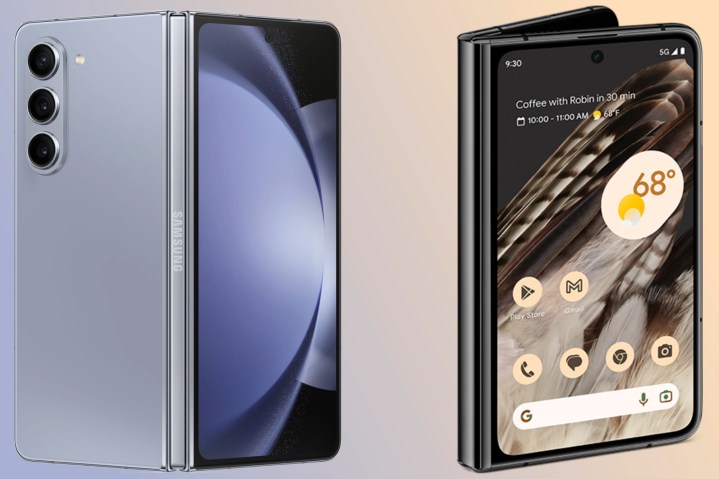
In the foldable smartphone arena, there’s little doubt that Samsung has become the heavyweight champion. After all, it’s had nearly four years to refine the experience, and it hasn’t been shy about doing so in public. Last year’s Galaxy Z Fold 4 proved that Samsung’s design was ready for prime time. Now, it’s refining that with the new Galaxy Z Fold 5, a worthy successor that delivers some nice quality-of-life improvements and even more power under the hood.
- Samsung Galaxy Z Fold 5 vs. Google Pixel Fold: specs
- Samsung Galaxy Z Fold 5 vs. Google Pixel Fold: design and display
- Samsung Galaxy Z Fold 5 vs. Google Pixel Fold: performance and battery
- Samsung Galaxy Z Fold 5 vs. Google Pixel Fold: cameras
- Samsung Galaxy Z Fold 5 vs. Google Pixel Fold: software and updates
- Samsung Galaxy Z Fold 5 vs. Google Pixel Fold: special features
- Samsung Galaxy Z Fold 5 vs. Google Pixel Fold: price and availability
- Overall winner: Samsung Galaxy Z Fold 5
Samsung may be the foldable smartphone maker to beat, but another notable contender threw its hat into the ring this year. Google entered the market this spring with its own unique take on foldable designs that borrows from its successful seven-year run with the Pixel series.
The Google Pixel Fold is a first-generation device, to be sure, but Google also isn’t some plucky little startup — it has the design and engineering chops to produce something special. The question is whether it’s special enough to unseat Samsung’s dominance or if the South Korean smartphone maker has widened the gap even further with this year’s Galaxy Z Fold 5.
Samsung Galaxy Z Fold 5 vs. Google Pixel Fold: specs
| Samsung Galaxy Z Fold 5 | Google Pixel Fold | |
|---|---|---|
| Size | Unfolded: 6.1 x 5.11 x 0.24 inches Folded: 6.1 x 2.64 x 0.53 inches |
Unfolded: 5.5 x 6.2 x 0.2 inches
Folded: 5.5 x 3.1 x 0.5 inches |
| Weight | 8.92 ounces | 10 ounces |
| Screen size | Main: 7.6-inch Dynamic AMOLED 2X Cover: 6.2-inch Dynamic AMOLED 2X |
Main: 7.6-inch OLED
Cover: 5.8-inch OLED |
| Screen resolution | Main: 2176 x 1812 pixels
Cover screen: 2316 x 904 pixels |
Main: 2208 x 1840 pixels
Cover screen: 2092 x 1080 pixels |
| Operating system | Android 13 with One UI 5.1.1 | Android 13 |
| Storage | 256GB, 512GB, 1TB | 256GB, 512GB |
| MicroSD card slot | No | No |
| Tap-to-pay services | Google Pay, Samsung Pay | Google Pay |
| Processor | Qualcomm Snapdragon 8 Gen 2 | Google Tensor G2 |
| RAM | 12GB | 12GB |
| Camera | Rear main: 50-megapixel (MP) primary, 12MP ultrawide, and 10MP telephoto
Front main screen: 4MP under-display Cover screen: 10MP |
Rear main: 48-megapixel (MP) primary, 10.8MP ultrawide, and 10.8MP telephoto
Front main screen: 8MP Cover screen: 9.5MP |
| Bluetooth | Bluetooth 5.3 | Bluetooth 5.2 |
| Ports | USB-C | USB-C |
| Fingerprint sensor | Yes (side-mounted) | Yes (side-mounted) |
| Water resistance | IPX8 | IPX8 |
| Battery | 4,400mAh
25W wired charging 15W wireless charging 4.5W reverse wireless charging |
4,821mAh
30W wired charging 7.5W Wireless charging |
| App marketplace | Google Play Store | Google Play Store |
| Network support | All major carriers | All major carriers |
| Colors | Icy Blue, Phantom Black, cream
gray, blue (Samsung Exclusives) |
Obsidian, Porcelain |
| Price | Starting at $1,800 | Starting at $1,800 |
| Buy from | Samsung | Samsung, AT&T, T-Mobile, Verizon, Amazon, Best Buy, Walmart |
| Review | Samsung Galaxy Z Fold 5 review | Google Pixel Fold review |
Samsung Galaxy Z Fold 5 vs. Google Pixel Fold: design and display
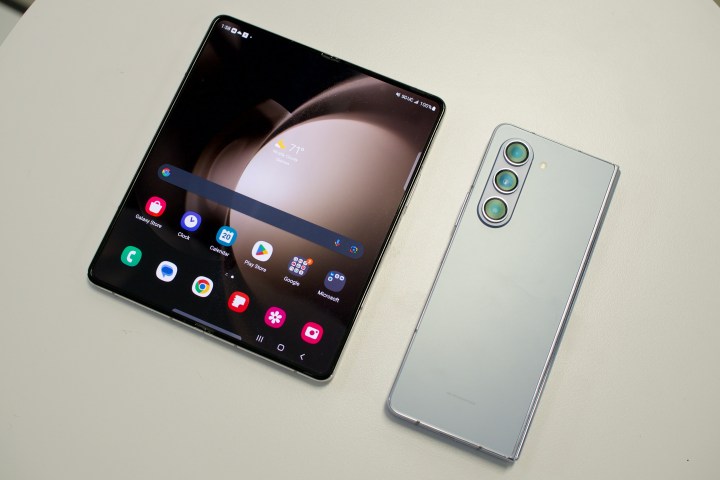
If you’ve put your hands on any of Samsung’s Z Fold phones over the past few years, you won’t find too many surprises in the Galaxy Z Fold 5. It’s clear that Samsung has come up with a design that works, so there aren’t any bold changes here, just a few year-over-year refinements, mostly focused on reducing the thickness and weight and improving the hinge.
Similarly, even though the Pixel Fold is Google’s first attempt at a foldable smartphone, the design language of the Google Pixel 7 is readily apparent here. Aesthetically, it feels like what you’d get if you stacked two Pixel phones together, right down to the glass back and eerily similar camera bump.
However, it’s that similarity to the standard Pixel 7 design that sets the Pixel Fold apart from Samsung’s foldable family. Samsung has adopted a narrower “candy bar” style design when closed that feels reminiscent of classic feature phones and some of the earliest foldables, such as Nokia’s E90 Communicator. This results in a cover screen with a 23:9 aspect ratio — much taller and narrower than most folks will be accustomed to. However, if you can get comfortable with the narrow screen, you’ll likely find that the Z Fold 5 feels more comfortable and natural in the hand when folded — and even more so now that it’s thinner and lighter than its predecessor.
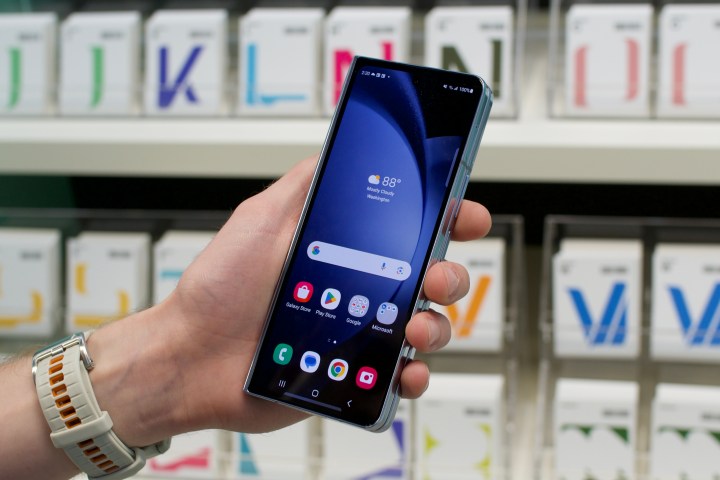
To put that in perspective, though, most modern flagship smartphones have a screen aspect ratio of around 19.5:1. This includes the iPhone 14 Pro Max, Samsung Galaxy S23 Ultra, and Google Pixel 7 Pro.
With the Pixel Fold, Google has gone in the opposite direction, widening the screen into a 17.5:9 presentation. This also gives it a proper 1080p HD resolution, which the Galaxy Z Fold 5 falls short of at only 2,316 x 904 pixels.
How much this matters is an open question, but if you like watching videos without unfolding the phone, there’s little doubt that the Pixel Fold will provide a nicer presentation. The downside is that this width makes it feel chunkier in the hand since you’re dealing with a front profile that’s about the same size as a Pixel 7 Pro at nearly twice the thickness.
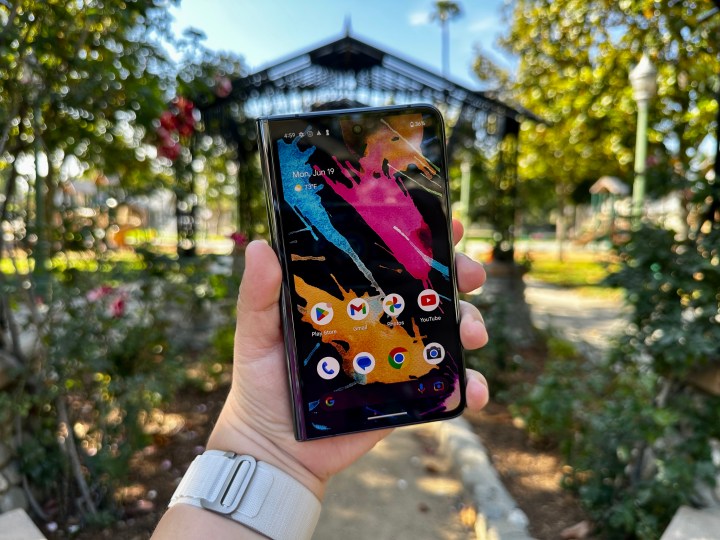
Further, while the Fold 5’s cover screen may seem larger at 6.2 inches versus the 5.8 inches of the Pixel Fold, diagonal screen sizes can be misleading when dealing with significantly different aspect ratios. In reality, the Pixel Fold’s cover screen actually has a slightly larger surface area at 13.71 square inches, compared to 13.02 square inches for the Galaxy Z Fold 5. That’s not a difference anyone is likely to notice, but it does show that diagonal screen sizes don’t always tell the whole story.
However, once you open both phones up, the screens are on much more equal footing. They have identical sizes and virtually the same resolutions. The main difference is that the Pixel Fold’s inner screen has a more landscape view to it, while the Z Fold 5’s is closer to a square shape.
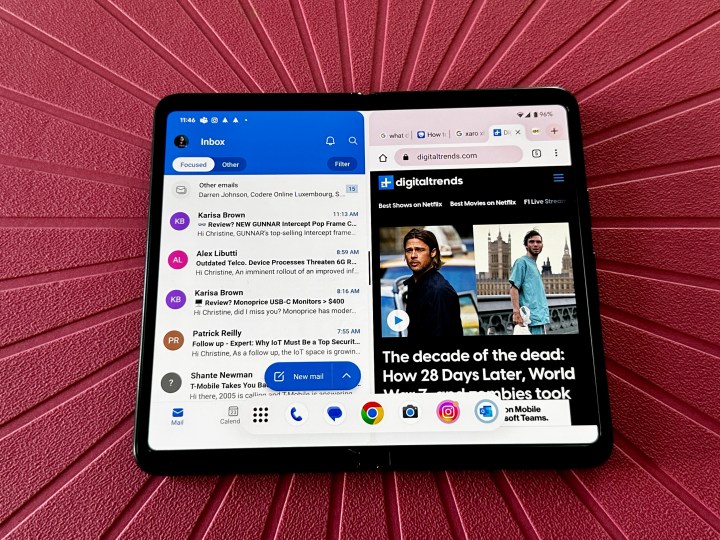
Samsung has boosted its AMOLED screens on this year’s Galaxy Z Fold 5 to 1,750 nits of peak brightness, which should help with outdoor viewing, but the Pixel Fold isn’t exactly a slouch in that area, boasting 1,550 nits of peak brightness and 1,200 during typical use.
Finally, no discussion of foldable smartphone design would be complete without a word on the hinges. Google impressed us with the ability of the Pixel Fold to actually close flat with no gaps, a feat in hinge design that has seemingly eluded Samsung — until now, that is. The Galaxy Z Fold 5 now includes what the company is calling its new “Flex Hinge” design that allows its foldable to do likewise.
Other than the design differences that will mostly come down to personal taste, the build quality and display specs of the Galaxy Z Fold 5 and Pixel Fold are too close to call this anything other than a tie.
Winner: Tie
Samsung Galaxy Z Fold 5 vs. Google Pixel Fold: performance and battery
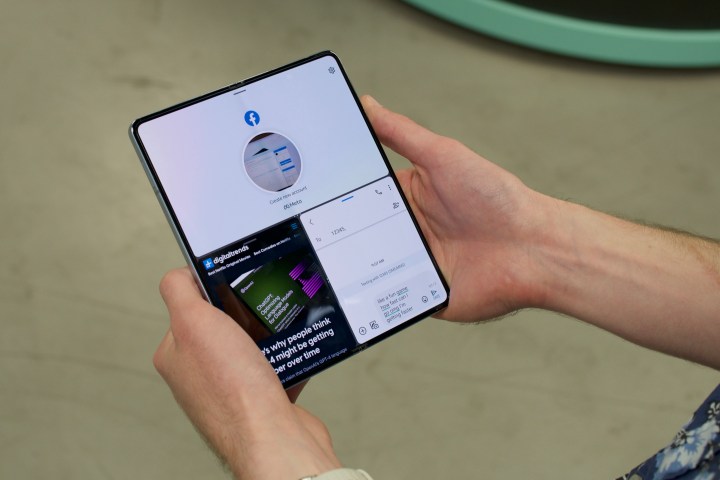
When it comes to raw performance, the Galaxy Z Fold 5 has the Pixel Fold beat, at least on paper, thanks to the new Qualcomm Snapdragon 8 Gen 2 chip that it packs inside.
Last year’s Galaxy Z Fold 4 was powered by a Qualcomm Snapdragon 8+ Gen 1 that noticeably edged out the Pixel Fold’s custom Tensor G2 chip, so the Snapdragon 8 Gen 2 will only serve to drive the Galaxy Z Fold 5 even further ahead.
That’s not to say the Tensor G2 is a sluggish chip, but it’s not optimized in the same way that Qualcomm’s flagship Snapdragon chips are. The Tensor G2 is the same chip found in the Pixel 7 lineup, and it shows its limits under strain. That’s particularly true when it comes to things like serious gaming, where it will heat up and take a more serious hit on battery life.
Nevertheless, the Pixel Fold can deliver a solid 24 hours of battery life as long as you’re not pushing it too hard with demanding tasks like gaming, but even power users should be able to end the day with around a quarter of a tank. The Galaxy Z Fold 5 comes out slightly ahead in battery life, with our tests showing about 35% to 50% after a day of heavier use, and also offers double the wireless charging speeds — 15 watts versus 7.5 watts on the Pixel Fold. The downside is the Z Fold 5 has slower wired charging at only 25 watts.
Winner: Samsung Galaxy Z Fold 5
Samsung Galaxy Z Fold 5 vs. Google Pixel Fold: cameras
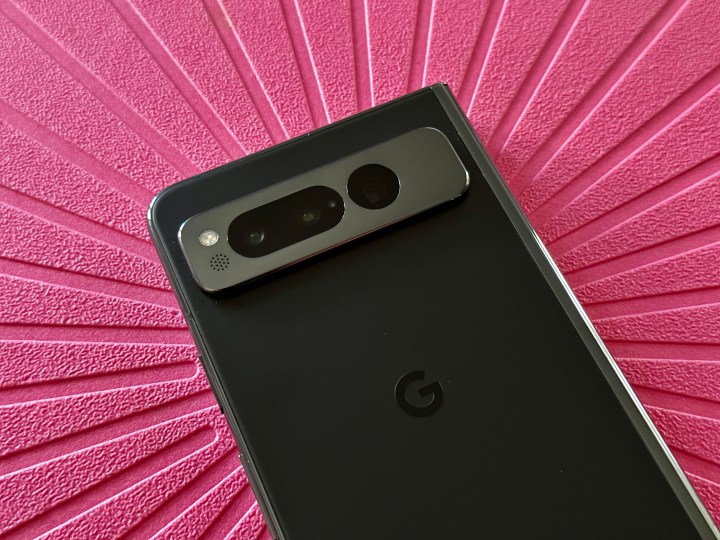
What the Tensor G2 lacks in raw power and efficiency, it more than makes up for in the performance of its neural engine. That’s where Google has focused its talents, resulting in a chip that can power computational photography features like no other.
This gives the Pixel Fold a serious edge when it comes to photography. It beat out the Galaxy Z Fold 4 in our head-to-head comparison, and we’re not convinced the Galaxy Z Fold 5 has the camera improvements to change that.
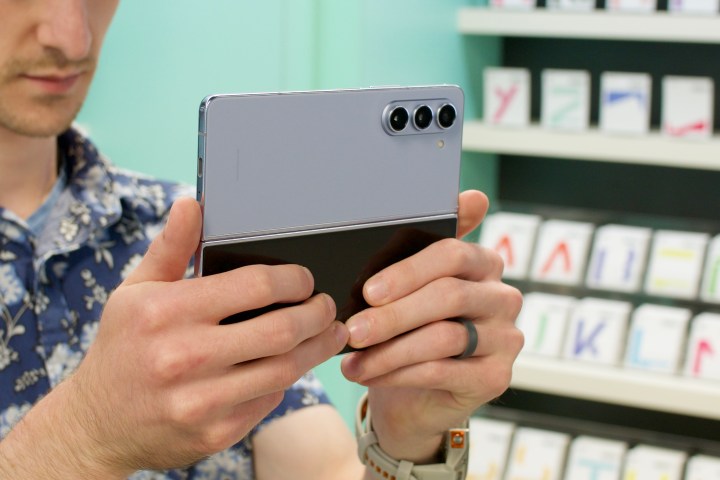
Firstly, the sensors in the Galaxy Z Fold 5 remain entirely unchanged from its predecessor, so any gains the Fold 5 is capable of making won’t be coming from its hardware. However, new lenses and the new image signal processor in the Snapdragon 8 Gen 2 noticeably improve those results, particularly for shots taken using the 3x optical zoom. You can see this for yourself in our Galaxy Z Fold 5 vs. Fold 4 camera test.
However, the Pixel Fold gets an edge over the Galaxy Z Fold in offering a 5X optical zoom plus an 8MP inside front camera that isn’t buried under its display like Samsung’s 4MP shooter. While those camera specs aren’t quite up to the flagship Pixel 7 Pro, they’re much closer than the gap between the Galaxy Z Fold 5 and Samsung’s top-of-the-line Galaxy S23 Ultra.
Winner: Google Pixel Fold
Samsung Galaxy Z Fold 5 vs. Google Pixel Fold: software and updates
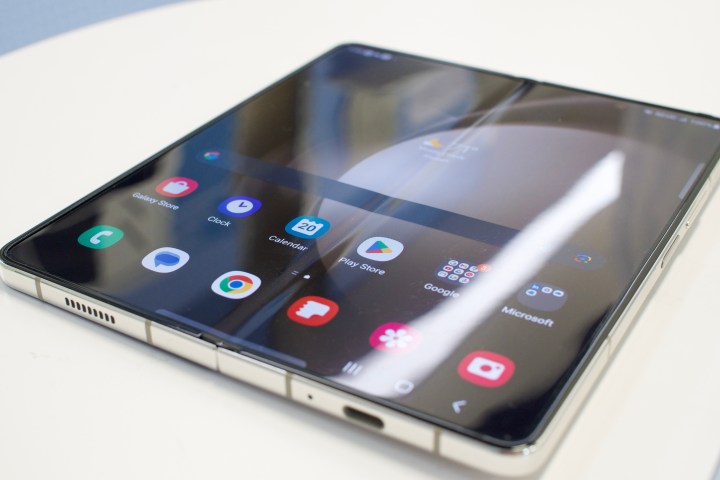
As 2023 smartphones, the Galaxy Z Fold 5 and Pixel Fold both ship with Android 13. While Samsung layers its One UI 5.1.1 interface on top of that, Google naturally delivers its usual “pure Android” experience for the Pixel Fold.
Ironically, Samsung beats Google in its Android update promises, with the Galaxy Z Fold 5 slated to get four years of updates that will eventually take it to Android 17 in 2027. Meanwhile, the Pixel Fold will see the end of its updates in 2026 with Android 16. That may not be a bad thing, considering we’d expect the Snapdragon 8 Gen 2 to remain relevant and capable of powering new Android versions for longer. Either way, both phones will receive five years of security updates to keep them on par.
Winner: Tie
Samsung Galaxy Z Fold 5 vs. Google Pixel Fold: special features

In building the software experience for the Pixel Fold, Google has made the best use of the new capabilities offered in Android 13 and likely also learned from a few of Samsung’s foibles over the years.
It wasn’t until Android 12L came along last year that the mobile operating system truly embraced larger-screened devices. Before that, Samsung had to build a lot into One UI to handle the needs of its foldables, but it’s no coincidence that the Galaxy Z Fold 4 came into its own with Android 12L.
With Android 13, foldable devices are on a much more level playing field, which shows when comparing the Pixel Fold to the Galaxy Z Fold 5. Both phones provide powerful split-screen and multitasking features, along with a taskbar to let you easily switch between apps, and the experience is fluid and intuitive no matter which platform you’re on.

Samsung’s Galaxy Z Fold 5 holds a productivity advantage for those who like to multitask, with the ability to run up to three apps side-by-side plus float a fourth on top. The Pixel Fold is limited to a simple dual-app split-screen view.
The Pixel Fold has a few unique tricks up its sleeve, including the same advanced machine learning-powered photographic tools found on Google’s Pixel 7 phones. However, its most interesting foldable tricks aren’t coming until Android 14 arrives later this year. This includes a promised Dual Screen Interpreter feature that will translate live conversations on the inner and outer screens so two people can interact more easily in different languages.
While not everybody is a fan of styluses, it’s hard to argue that the S Pen on the Galaxy Z Fold 5 isn’t a nice perk, and while Samsung still doesn’t provide a place to stash it — you’ll have to add a case for that — the new S Pen is more colorful and thinner than ever. The Pixel Fold has no equivalent.
With extra software features and the powerful S Pen, the Galaxy Z Fold 5 wins this round.
Winner: Samsung Galaxy Z Fold 5
Samsung Galaxy Z Fold 5 vs. Google Pixel Fold: price and availability
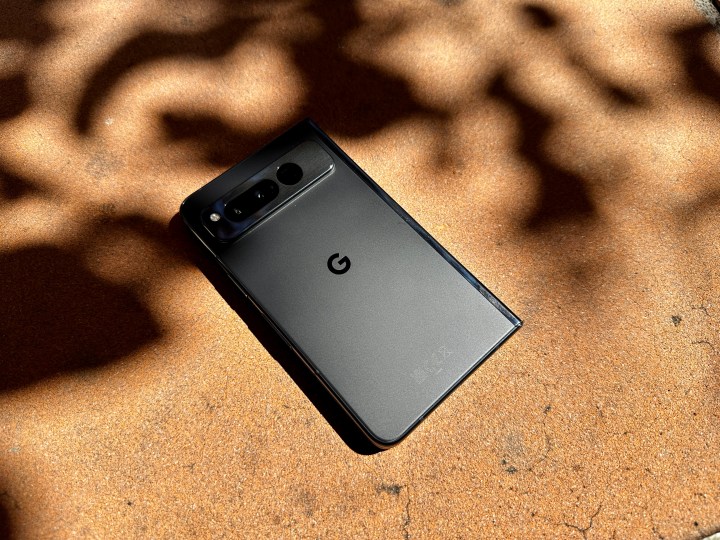
The Galaxy Z Fold 5 is available now from Samsung and most major retailers, where the starting $1,800 price tag will get you 256GB of storage and 12GB RAM. There are also 512GB and 1TB models available. This year, Samsung’s classic Phantom Black is joined by Icy Blue and Cream as standard colors, plus Blue and Gray finishes exclusively from Samsung’s online store. For a limited time, Samsung is also offering double the storage on select colors when you buy direct from Samsung — 512GB for the price of 256GB.
Google’s Pixel Fold is available at a similar $1,799 price tag for the same 256GB/12GB configuration. There’s a 512GB upgrade available but no 1TB version. Your color options are limited to Porcelain and Obsidian finishes that are even more mundane than what Samsung is offering this year.
Overall winner: Samsung Galaxy Z Fold 5

The Galaxy Z Fold 4 already edged out the Pixel Fold in performance and reliability, partly due to Samsung’s more established track record in building foldables. So, it’s no surprise that this year’s Galaxy Z Fold 5 pulls even farther ahead with a more powerful processor and an improved hinge design.
With its new flex hinge, Samsung quite literally closes the gap, allowing the Galaxy Z Fold 5 to fold fully closed in the same way as the Pixel Fold. It also offers more color options, a 1TB storage configuration, better multitasking features, and Samsung’s S Pen, making for a much more well-rounded package overall.
That’s not to say the Pixel Fold is a slouch. Fans of a cleaner Android operating system or a more traditional smartphone form factor, when closed, will appreciate what Google has done here. While the Tensor G2 can’t keep up with Qualcomm’s Snapdragon 8 Gen 2 in raw performance, it powers Google’s usual brilliant computational photography features to provide a better camera experience.
Still, at the end of the day, the Galaxy Z Fold 5 comes out as the more well-rounded option — making it the winner of this comparison.
Editors' Recommendations
- The Galaxy Z Fold 6 and Flip 6 release date just leaked
- Best Samsung Galaxy Z Fold 4 deals: Grab the foldable phone for $700
- 5 phones you should buy instead of the Google Pixel 8
- Save on the Google Pixel 8, Pixel 8 Pro and Pixel Fold today
- Foldable phone deals: Samsung, Motorola, Google, and more, from $500




